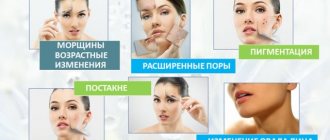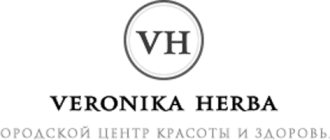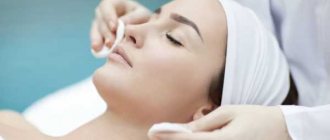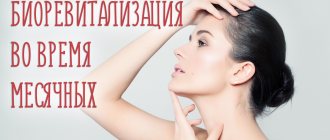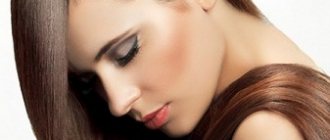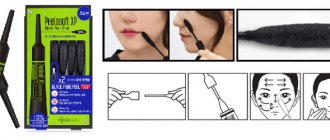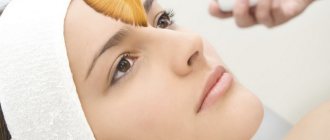What types of peelings are there and what is radio wave lifting? A cosmetologist talks about popular cosmetic procedures
Subscribe and read Express Newspaper in:
Autumn is the best time to improve the condition of the skin after a hot summer, saturate it with moisture, remove dead cells and nourish the skin with vitamins. Natalia Vorontsova , a cosmetologist, neurologist, physiotherapist and trainer in injection techniques and professional cosmetics, we will analyze several methods that you can take a closer look at in the fall.
Why in autumn?
Autumn is the time for peelings, as it is ideal for starting procedures:
- there is less sunlight;
- you can have time to do the longest course of peeling activities.
Peeling in the fall is suitable for women who want to achieve tangible results. Of course, to consolidate the cleansing effect, you will need not one procedure, but a whole course. You can plan and apply it without haste in late autumn, winter and even early spring.
It is important to remember that peelings should not be carried out during severe winter frosts, which turn out to be an incredibly difficult test for delicate skin.
Dictionary entries define the word “peeling” as “removal of the surface layer of the epidermis.” Peeling is, of course, a cleansing procedure that allows you to effectively care for the skin of the face, hands, neck, décolleté and the whole body.
Skin cleansing is beneficial for all women, but there are special indications for the procedure:
- Hyperpigmentation. Melanin returns to normal, which helps the skin get rid of blemishes and acquire an even color.
- Photoaging. Thanks to cleansing, the skin tone increases and it gains elasticity.
- Oily skin and enlarged pores. The composition of the cleanser frees the epidermis from the keratinized layer of cells and tidies up the functioning of the sebaceous glands, which helps to narrow the pores.
- Acne and acne scars. Cosmetics help heal acne and smooth out scars.
- Dullness and fatigue of the skin. Metabolism is improved, cells are renewed, which affects the health of the face.
Peels aimed at rejuvenation are used from the age of 25, and procedures designed to clear the skin of acne - from the age of 16.
Cleansing sessions help nourish and heal the epidermis.
The effect of the procedure depends not only on possible skin problems, but also on the chosen method.
Procedure No. 2: Biorevitalization
This is the second procedure that can be done when arriving from the sea. But when going to the sea, it’s also a good idea to protect your skin from exposure to ultraviolet radiation and moisture loss with the help of this procedure.
Biorevitalization is a procedure for introducing small droplets of hyaluronic acid into the skin using a thin needle over the entire area of the face, neck, and décolleté. It can be a salvation for skin that is “withered” in the sun, and a cosmetologist can also recommend it to those young ladies who have “overdone” their tanning. Usually two or three procedures are enough with an interval of 2-3 weeks.
By the way, modern biorevitalizants can contain not only hyaluronic acid, but also vitamins, enzymes, antioxidants, and amino acids. Of course, such drugs are more expensive, but in this case there is no need for related procedures, such as mesotherapy.
Types of peelings
The following peelings differ according to the method of exposure:
- physical,
- mechanical,
- chemical.
Physical peeling refers to hardware cosmetology. It affects the epidermis using laser, ultrasound or vacuum. Hardware peeling is carried out only according to the indications of a cosmetologist. Home cleansing is done without aggressive agents or devices. Hardware procedures allow you to get rid of serious skin defects.
Mechanical peeling is one of the easiest types of cleansing. For the procedure, products that contain abrasive substances are used. The composition is applied to the skin and massaged, which mechanically removes dead particles from the surface of the skin. This improves blood microcirculation and accelerates cell renewal. A course of several peeling procedures with abrasive particles eliminates facial wrinkles and promotes excellent face lifting.
Chemical peeling is a procedure that exposes the skin to a chemical burn. The upper layers of the epidermis are destroyed by acid, due to which the skin's protective mechanisms are activated and active restoration and healing begins. As a result, the skin texture is improved and its tone improves. The sessions are completely harmless, however, an allergic reaction to the components of the composition may be a contraindication.
Chemical peeling according to the depth of impact can be:
- surface,
- median,
- deep.
The type of procedure is selected by a cosmetologist who focuses on the season, the patient’s age and skin condition.
Recommendations from cosmetologists
As we have already found out, autumn is the time for peeling. What do cosmetologists advise regarding the choice of procedure?
- Mechanical peelings can be carried out at home, using both purchased and self-prepared products. To cleanse in the fall, you can use coffee grounds with honey and cream, sea salt (crushed), sugar, oatmeal and other products that you always have on hand.
- Hardware peelings are carried out by experienced specialists according to clear indications. Especially laser and ultrasound. Despite the apparent simplicity of the manipulations, their painlessness, minimal side effects and a relatively short recovery period, the procedures have contraindications that only a professional can take into account.
- Superficial chemical peels should be selected taking into account the characteristics of your skin. So milk peeling is an ideal option for young epidermis with a tendency to dryness and few problems. Glycolic – for oily skin with signs of age-related changes.
- The average effect is justified in the presence of pronounced problems and age-related changes. Salicylic - for problem skin, trichloroacetic is recommended for women over 35 years old, retinoic - for loss of color and decreased turgor.
- Deep - only for women over 45-50 years old for clear indications. Conducted once a year at least. However, experts say that such an effect with adequate care is enough for a period of up to 3-5 years.
- The course of superficial procedures ranges from 5 to 7 at weekly intervals. Next, you need to use soft, gentle scrubs at home regularly at least once a week to maintain the effect.
- Medium effects, depending on individual characteristics, may require from 3 to 5 sessions with an interval of 2-4 weeks.
Regardless of the time of year, it is necessary to use sunscreen. After peeling, even in autumn, before going outside, you need to use products with a UV protection index of at least 30.
Note! Cosmetologists warn that winter is not the best time for cleansing procedures. Frost, wind, changes in temperature and humidity (outdoors - indoors) have a detrimental effect on the condition of thin, delicate skin after peeling.
Superficial peeling
Superficial peeling is a gentle procedure that uses products with a low acid content. Cosmetics often contain acids from fruits (malic, citric, glycolic) or fermentation products (lactic).
With “light” peeling, only the surface layer of the epidermis is exfoliated. After the procedure, slight redness is possible, which disappears after a few hours.
Superficial peeling can be done both in a beauty salon and at home.
For home peeling, use any products containing acids: strawberries, grapes, apples, sauerkraut juice or lemon.
Lemon peeling
- 1 tbsp. l. lemon juice;
- 1 egg yolk;
- 1 tbsp. l. honey
- Mix the ingredients thoroughly until smooth.
- Apply the mixture with massaging movements onto your previously cleansed face.
- Rinse off the mask with warm or cool water after 15 minutes.
- Moisturize your face with cream.
Lemon composition is great for oily and combination skin.
After a course of superficial peelings, the complexion is evened out, age spots are slightly lightened, and small wrinkles are smoothed out.
Cleaning your skin from a young age
To maintain fresh, youthful skin for many years, you should make it a rule to regularly cleanse your skin. Peels are just such an effective method of treating and rejuvenating the skin. The thing is that the life cycle of cells is approximately 4-5 weeks, after which they die, die and accumulate on the surface of the skin. If they are not removed, you are at risk of acne and a dull complexion.
The rapid removal of the upper layers of keratinized cells activates the work of skin cells, resulting in improved skin tone and a lifting effect. The skin looks young, elastic, fresh and radiant.
Peels can also be used for various cosmetic problems such as scars, age-related skin changes, pigmentation, acne scars. The peeling program includes pre-peeling preparation, peeling, and post-peeling care.
Medium peeling
For medium peeling, specialists use more concentrated acids. Often for cosmetic procedures, trichloroacetic acid (TCA) is used, which is able to penetrate to the basal layer of the epidermis. Another popular type of medial treatment is the Jessner peel.
During the post-peeling period, the epidermis becomes covered with a white film under the influence of acid. Subsequently, a crust forms on the face, which peels off for a whole week. Redness persists for two to three weeks.
Medium peeling sessions are suitable for women with hyperpigmentation, freckles, acne and shallow superficial wrinkles.
Get deeper
As a rule, retinol is used for medium and deep peels (it is used to carry out the so-called yellow peel) and trichloroacetic acid.
Retinol peeling is especially loved by cosmetologists, as it helps achieve several effects at once. In addition to skin renewal, it stimulates the epidermis at the cellular level, allowing for rejuvenation, reducing sebum production, and coping with superficial wrinkles. To delay the appearance of signs of aging, after the age of thirty, it is recommended to do a retinol peel once or twice a year.
Article on the topic
Anti-wrinkle pillow and peeling snail. What new things have been invented in cosmetology?
As for trichloroacetic peeling, this is not such a simple procedure. During such peeling, the cosmetologist applies several layers of acid until the so-called frost is achieved - whitening of the skin. Subsequently, the skin peels off, so after trichloroacetic peeling it will take about a week for rehabilitation. In the first two days, the skin feels tight, and on the third day the skin begins to crack. The process begins with the chin, and then moves to the entire face, which becomes covered with crusts. Over time, the crusts turn brown and fall off, but until this happens, the face looks unsightly. Therefore, if you decide to undergo such a procedure, you should take care in advance to find an opportunity to stay at home during the recovery period. But the effect of trichloroacetic peeling is usually impressive. Wrinkles and age spots disappear, skin structure improves.
Deep peeling
Deep peeling is a medical procedure with a significant invasion of the structure of the epidermis; the composition of the peeling affects all layers of the skin. Sessions are carried out only in medical cosmetology centers by qualified specialists.
The deep peeling procedure is very painful, so it is performed only under anesthesia.
It should be remembered that phenol is used during peeling. This substance has a toxic effect on internal organs, as a result of which the patient is connected to a cardiac monitor to monitor his cardiac activity. To reduce the concentration of phenol in the blood and accelerate its removal from the body during the procedure, intravenous drips with glucose solution are required.
Subsequently, a crust forms on the face, which disappears within two weeks, but the entire recovery period may take several months.
These types of procedures are perfect for the fall, but how long it will take you to achieve the desired effect depends on the course chosen by the specialist.
Summary
Let's summarize. The effectiveness of peelings in the autumn period is the highest. It is at this time that you can use more active products to tidy up your skin.
But you should also remember that aggressive procedures should not be abused. After all, the body’s internal hidden reserves are not limitless. There may come a time when the “safety margins” simply run out. Then no force will force your body to recover. After all, the skin is the largest organ, which also has its ultimate maximum.
What are they?
Chemical (with enzymes, various acids or, for example, retinol), physical (laser, ultrasound, vacuum, etc.) and mechanical, for which all kinds of abrasive components, microcrystals or grinding attachments are used. The procedure of physical and mechanical peeling is often called dermabrasion (from the Latin derma - skin and abrasion - scraping). The latest techniques are gas-liquid peelings (hydro-peelings), combining exfoliation and care: during the procedure, the skin is treated with a pressurized jet of liquid containing vitamins, antioxidants, nourishing and moisturizing components.
Sugar peeling with retinol
Clarena Power Vit C Line Retinol Sugar Peeling should be used if you notice the first appearance of wrinkles and age spots. Sugar particles remove dead skin cells, retinol lightens age spots, and almond, sunflower, sesame and olive oils, as well as macadamia oil, moisturize, restore and tone, filling the skin with natural radiance. After using the product, the epidermis becomes smoother and more elastic.
Who can't?
Like any procedure, peeling has its contraindications. Among them:
- Violations of the integrity of the skin.
- Any skin disease during an exacerbation period.
- Pregnancy.
- Lactation.
- Contact retinoic dermatitis.
Retinoids are derivatives of vitamin A, which includes retinol. An allergic reaction when encountering them is a fairly common occurrence, but cosmetologists do not consider retinoic dermatitis an absolute contraindication for peeling. In this case, the doctor will simply select the composition taking into account your individual characteristics.
Autumn is the time for peelings and cleansing
In spring and summer, our skin, like a sponge, absorbs all negative environmental factors.
As a result, the pores are enlarged, and hated blackheads and comedones form. Often the skin is dehydrated from high temperatures and sun exposure. In September, when ultraviolet activity has dropped, it is possible and necessary to carry out autumn procedures such as peelings. This is necessary for deep and thorough cleansing. The main goal is stimulation and regeneration of new cells to achieve smooth, healthy, glowing skin. What is skin peeling? This is a medical procedure aimed at cleansing and exfoliating dead skin cells. This includes: all kinds of facial cleansing, ultrasonic peeling, microdermabrasion, and the actual classification of all peelings: all-season, superficial, medium or deep peeling. All procedures are selected by a cosmetologist individually and depend on the condition of the skin. IMPORTANT! Autumn procedures such as peelings should be carried out strictly by a dermatologist in a cosmetology office. Full compliance with the terms of the procedure protocol is necessary. With an unprofessional approach, there is a high risk of skin burns, and as a result: scars, scars, pigmentation, thinning of the skin.
